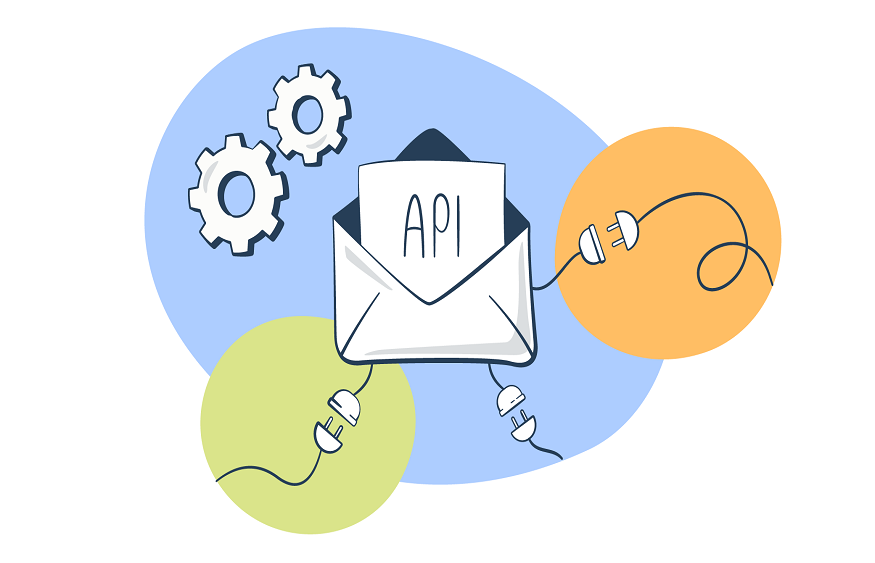Enhancing Email Communication Efforts by Investigating Integration Possibilities with Email API Providers

Effective email communication is essential for connecting organizations with customers in the modern digital era. Businesses frequently use email API providers to simplify the email-sending process. These service providers give a range of integration possibilities that can significantly improve email communication efforts. In this post, we’ll look at various integration options with email api providers and discuss how they can enhance your email communication.
Direct API Integration:
Direct API integration is a well-liked integration technique. This method entails programmatically sending emails using the Application Programming Interface (API) offered by email API providers. Customizing factors like recipients, email content, attachments, and more through direct API access gives enterprises more control over the email-sending process. It is versatile for companies with particular needs or complicated email-sending requirements.
SMTP Integration:
Another popular method for interfacing with email API providers is SMTP (Simple Mail Transfer Protocol) integration. Email API providers frequently offer SMTP, making it a dependable email delivery method. Businesses can set up their servers or applications to send emails using the SMTP settings supplied by the email API provider by integrating SMTP. This connectivity option is simple and perfect for companies using SMTP-based email delivery systems or applications.
Integration with Email Service Providers (ESPs):
ESPs are companies that focus on email deliverability and marketing. Some ESPs provide integration options with email API providers, fusing the ESPs’ robust email delivery infrastructure with their email marketing capabilities. Thanks to this connectivity, businesses may effectively handle email marketing campaigns, subscriber lists, A/B testing, and analytics. Companies concentrating on email marketing campaigns and wanting to increase deliverability and tracking capabilities will find that integrating with ESPs is especially advantageous.
CMS and CRM Integrations:
Businesses can streamline email communication inside existing workflows by integrating api for email sending capabilities into Content Management Systems (CMS) and Customer Relationship Management (CRM) platforms. Email functionality may be seamlessly included in popular CMS and CRM platforms thanks to the connectors that many email API providers offer. Companies can set off emails in response to particular CMS or CRM events or actions through these interfaces. This automation makes sending targeted and individualized emails possible, improving user experience and engagement.
E-commerce Platform Integrations:
Integrating email API providers with e-commerce platforms is essential for firms engaged in the e-commerce industry. Providers of email APIs frequently provide integrations or plugins to make it easier for their services and well-known e-commerce platforms to communicate with one another. These interfaces automate transactional emails, such as order confirmations, delivery updates, and abandoned cart notifications. Businesses may personalize email marketing efforts, boost engagement, and raise conversion rates using consumer data from the e-commerce platform.
Integration of Web Forms:
Web forms, such as registration, subscription, and contact forms, are crucial for gathering website user data. Email API suppliers provide integration services that let companies send email notifications or start email sequences in response to user input from online forms. By streamlining the process of gathering and using user data, this connection improves consumer interaction and experience.
Integration:
Integration of email API providers into mobile applications is essential for efficient user communication in a world that is becoming increasingly mobile-centric. Email API providers frequently offer Software Development Kits (SDKs) or libraries created expressly for mobile app integration. Businesses can send pertinent email notifications to app users through push notifications or in-app messaging by integrating email API providers into mobile apps. The rapid delivery of critical messages to users, even while they are not actively using the app, is made possible by this integration, which boosts user happiness and engagement.
Integrations of Marketing Automation Tools:
Marketing Automation Tools significantly simplify marketing initiatives by automating processes and distributing personalized information. Businesses may build automated email processes based on user behavior, demographics, or segmentation criteria thanks to the numerous email API providers who offer connections with well-known marketing automation solutions. Businesses may deliver tailored messages to the right audience at the right time and increase the success of their email marketing campaigns by integrating email API providers with marketing automation technologies.
API Libraries and Software Development Kits (SDKs):
Email API providers frequently provide pre-built libraries or SDKs adapted to various programming languages or platforms to streamline integration. These tools make it simpler for developers to add email-sending capabilities using the API by giving them ready-to-use code snippets and functions. An easy method to speed up integration with email API providers and expand the functionality of email-sending operations is to use API libraries and SDKs. Due to the ready-to-use code snippets and functions provided by these pre-built resources, integration is slicker and more effective.
Customized Integrations and Consultations:
Businesses occasionally need specialized integration solutions that exceed the available possibilities. Email API providers know this and provide supplementary services like consultations and technical integrations. Through these services, firms can discuss their integration objectives, particular requirements, and the potential for developing tailored solutions. Businesses can build specialized integration bridges that smoothly link their existing systems with the provider’s infrastructure by working closely with the email API provider, delivering a unified and effective email communication environment.
Webhook Integrations:
Webhook integrations are another way to connect with email API providers. Webhooks allow for the real-time exchange of data across apps. By setting up webhooks with email API providers, businesses can get immediate notifications or data updates for events like email opens, clicks, or bounces. Companies can automate activities based on these occurrences with this integration option, such as updating user information or sending follow-up emails. Webhook integrations offer a valuable and effective way to keep track of email-related activity and take rapid corrective action.
Conclusion:
In summary, integrating with email API providers gives companies a variety of alternatives for enhancing email communication. Businesses can streamline their email-sending procedures, automate operations, and offer individualized experiences using API Libraries and SDKs, tailored integrations and consultations, or webhook integrations. Companies may use email API providers’ capabilities to maximize their email communication’s efficacy and achieve improved engagement and conversion rates by carefully analyzing their unique requirements and selecting the most relevant integration choices.






